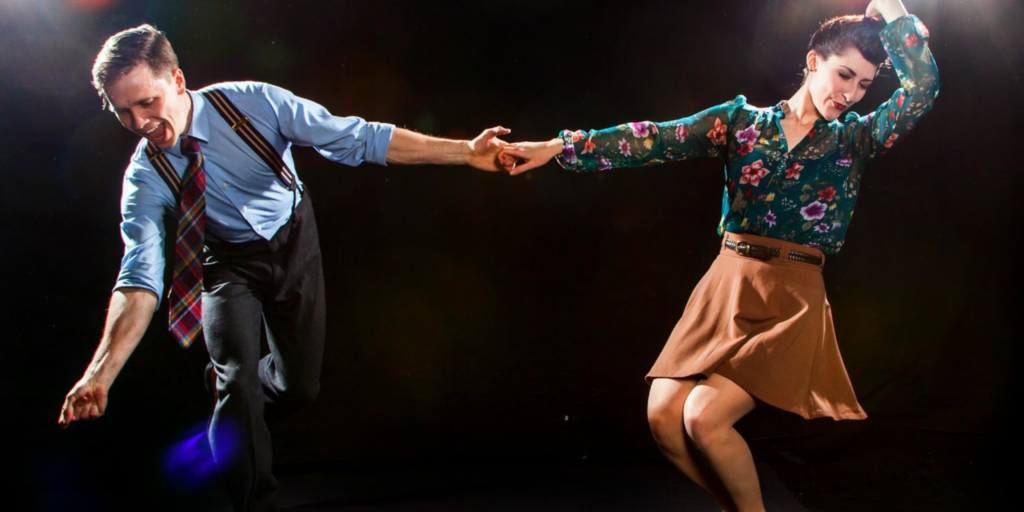Swing, Jive, and Blues Dances are a group of related dance styles that originated in the United States during the early 20th century, primarily evolving from jazz, blues, and early rock music. These dances are known for their energetic footwork, improvisational nature, and strong connection to the music. Each has distinct characteristics, but they share a foundation in partner dancing with a focus on rhythm and musicality.
Swing Dances
Swing is a broad category of partner dances that emerged alongside swing music in the 1920s-1940s. Popular styles include:
Lindy Hop: Originating in Harlem in the 1920s, Lindy Hop is considered the grandfather of swing dances. Known for its athletic, playful movements and aerials (flips and lifts), Lindy Hop combines solo and partner work. It can be danced at various tempos and is known for its improvisation.
East Coast Swing: A simplified version of Lindy Hop, East Coast Swing has a six-count basic step. It’s easy to learn and often danced to faster swing, rock, or big band music.
West Coast Swing: A smoother, more elastic form of swing, West Coast Swing is danced in a slot (a narrow line of movement) and is often set to slower blues, R&B, or pop music. It emphasizes musical interpretation and partner connection.
Jitterbug: A catch-all term that originally described various forms of swing, particularly fast-paced dances like Lindy Hop and East Coast Swing. Jitterbug is known for lively, quick footwork and can be danced to fast swing music.
Jive Dances
Jive is a form of swing dancing that developed alongside early rock and roll music in the 1940s and 1950s. It is characterized by fast footwork, upbeat energy, and bouncy movements.
Ballroom Jive: A highly stylized version of jive included in competitive ballroom dancing. It features fast, precise footwork, lively kicks, and spins, danced to upbeat swing or rock and roll.
Modern Jive: A simplified version of swing and jive dancing, Modern Jive (like Ceroc) is easy to learn, with simple footwork and smooth, flowing movements. It can be danced to a wide variety of modern music.
Blues Dances
Blues dancing developed alongside blues music in African-American communities in the early 20th century. Unlike swing and jive, blues dancing tends to be slower, more grounded, and intimate, with a focus on musical interpretation and emotional expression.
Traditional Blues: Often danced in close embrace, traditional blues involves slow, subtle movements with a strong connection between partners. It is characterized by rhythmic weight shifts and pulses that reflect the blues music.
Fusion Blues: A modern offshoot that incorporates elements from other dance styles, like tango or contemporary dance, while maintaining the grounded and soulful feel of blues dancing. It’s danced to a broader range of music, from electronic blues to downtempo tracks.
Other Related Dances
Boogie Woogie: A fast-paced swing dance that emerged in the 1940s, popular in Europe. It is often danced to early rock and roll or boogie-woogie music, with lots of energy, fast footwork, and playful improvisation.
Balboa: A swing dance that originated in California in the 1930s. It’s danced in close embrace with small, fast steps, making it ideal for crowded dance floors. Balboa emphasizes subtle, intricate footwork.
Shag: Another swing dance style from the 1930s, shag features a quick tempo with small, bouncy steps, and is often danced to faster swing or early jazz music. Carolina Shag is a popular variation.
These styles, while distinct, often overlap in social dance scenes, with dancers incorporating elements from one into another. Each dance allows for a wide range of musical expression, making them beloved in both traditional and contemporary settings.

